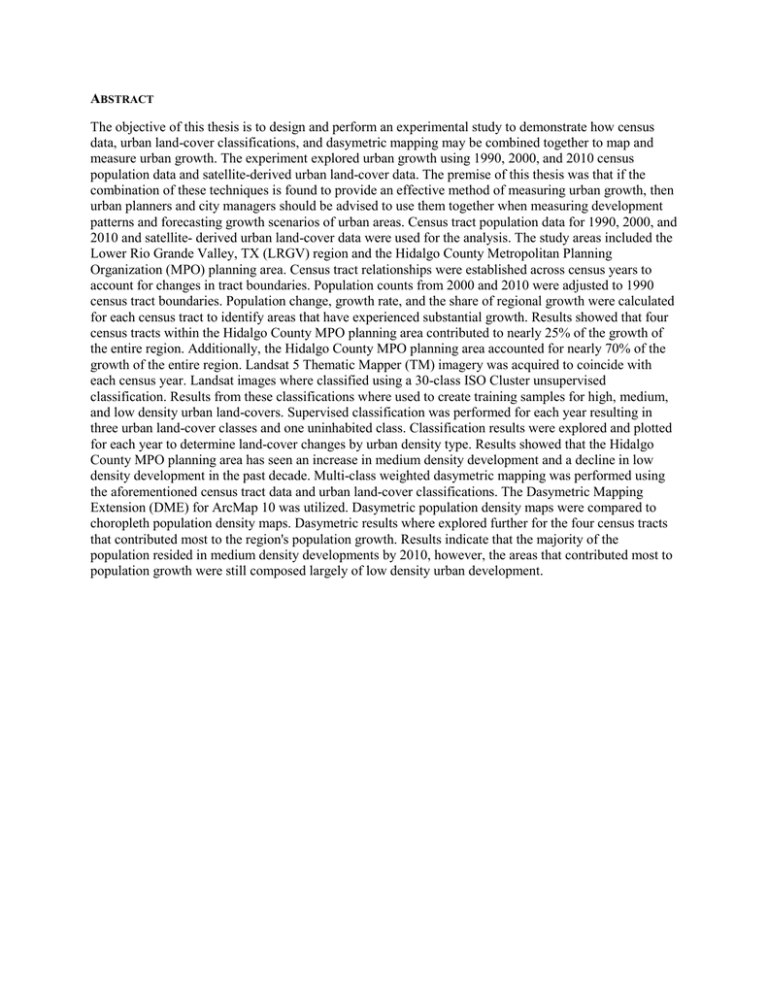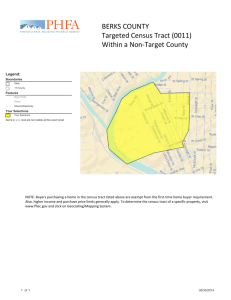The objective of this thesis is to design and perform an experimental
advertisement

ABSTRACT The objective of this thesis is to design and perform an experimental study to demonstrate how census data, urban land-cover classifications, and dasymetric mapping may be combined together to map and measure urban growth. The experiment explored urban growth using 1990, 2000, and 2010 census population data and satellite-derived urban land-cover data. The premise of this thesis was that if the combination of these techniques is found to provide an effective method of measuring urban growth, then urban planners and city managers should be advised to use them together when measuring development patterns and forecasting growth scenarios of urban areas. Census tract population data for 1990, 2000, and 2010 and satellite- derived urban land-cover data were used for the analysis. The study areas included the Lower Rio Grande Valley, TX (LRGV) region and the Hidalgo County Metropolitan Planning Organization (MPO) planning area. Census tract relationships were established across census years to account for changes in tract boundaries. Population counts from 2000 and 2010 were adjusted to 1990 census tract boundaries. Population change, growth rate, and the share of regional growth were calculated for each census tract to identify areas that have experienced substantial growth. Results showed that four census tracts within the Hidalgo County MPO planning area contributed to nearly 25% of the growth of the entire region. Additionally, the Hidalgo County MPO planning area accounted for nearly 70% of the growth of the entire region. Landsat 5 Thematic Mapper (TM) imagery was acquired to coincide with each census year. Landsat images where classified using a 30-class ISO Cluster unsupervised classification. Results from these classifications where used to create training samples for high, medium, and low density urban land-covers. Supervised classification was performed for each year resulting in three urban land-cover classes and one uninhabited class. Classification results were explored and plotted for each year to determine land-cover changes by urban density type. Results showed that the Hidalgo County MPO planning area has seen an increase in medium density development and a decline in low density development in the past decade. Multi-class weighted dasymetric mapping was performed using the aforementioned census tract data and urban land-cover classifications. The Dasymetric Mapping Extension (DME) for ArcMap 10 was utilized. Dasymetric population density maps were compared to choropleth population density maps. Dasymetric results where explored further for the four census tracts that contributed most to the region's population growth. Results indicate that the majority of the population resided in medium density developments by 2010, however, the areas that contributed most to population growth were still composed largely of low density urban development.


